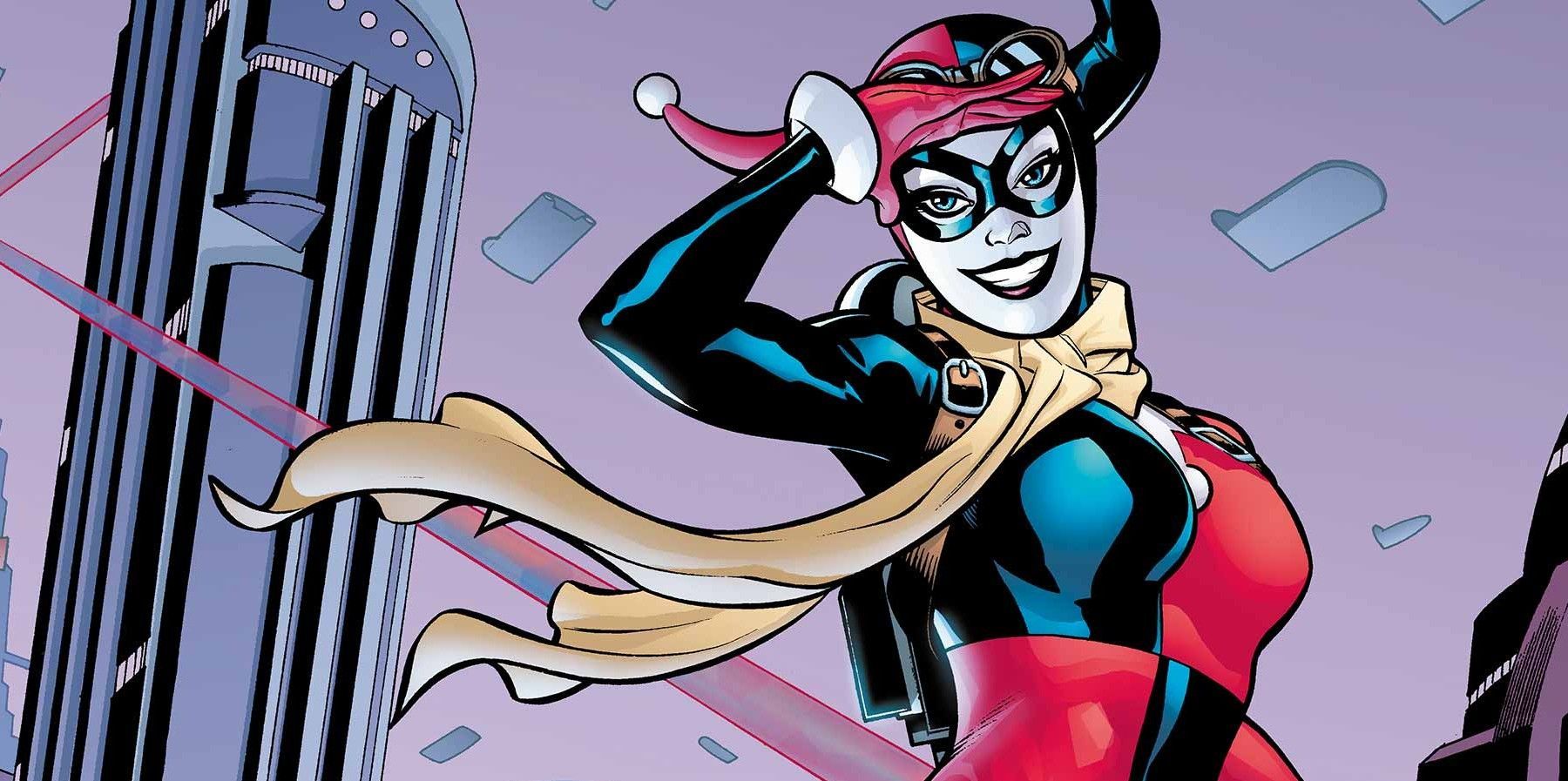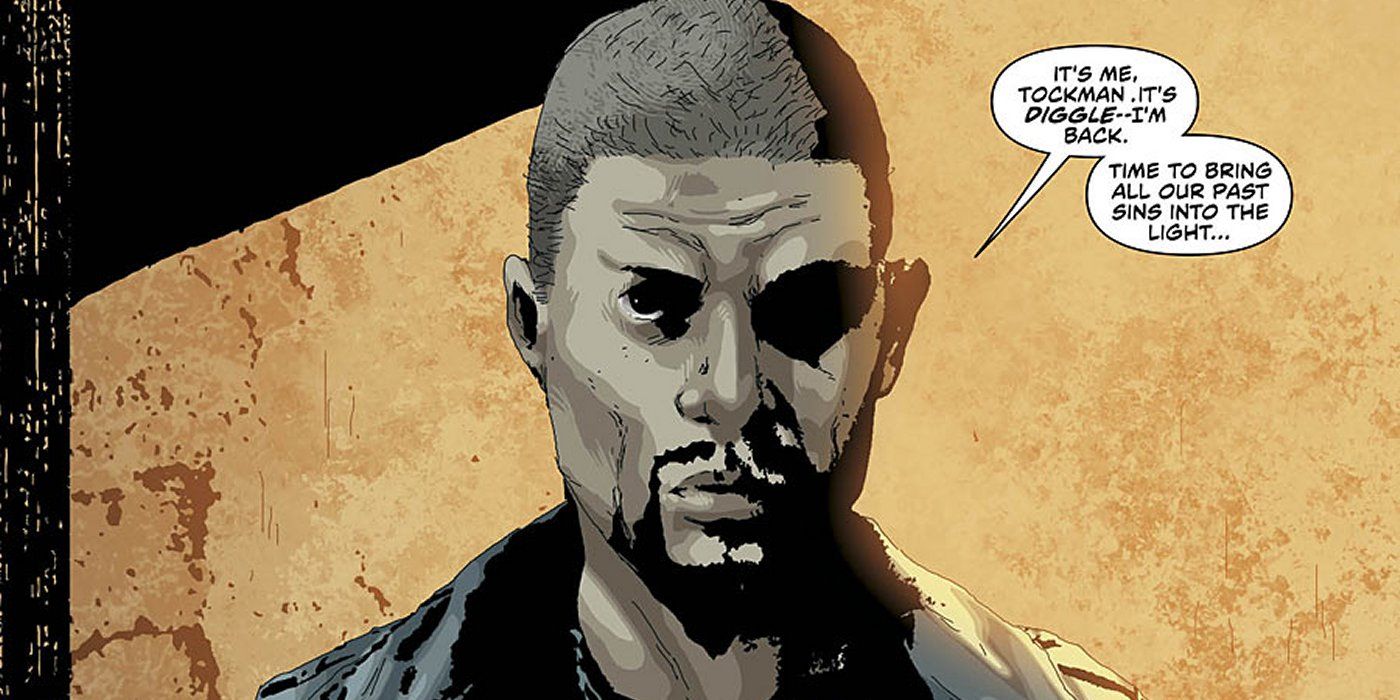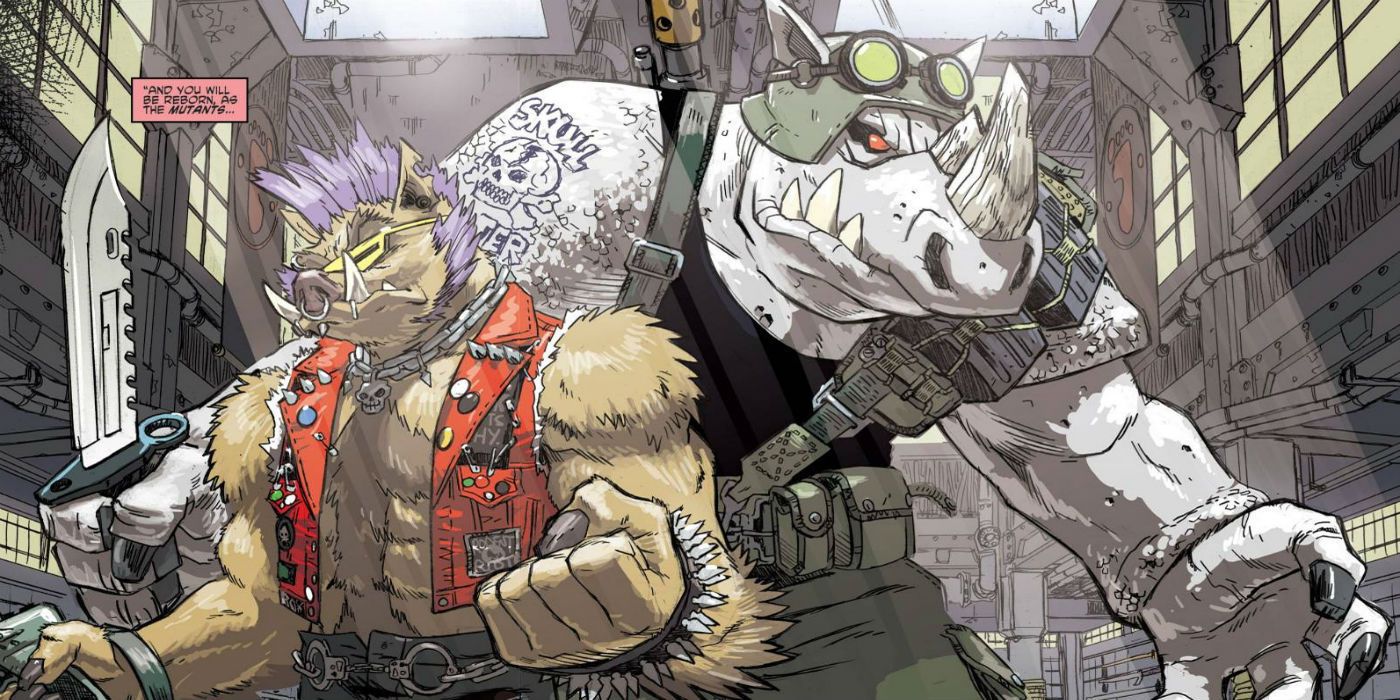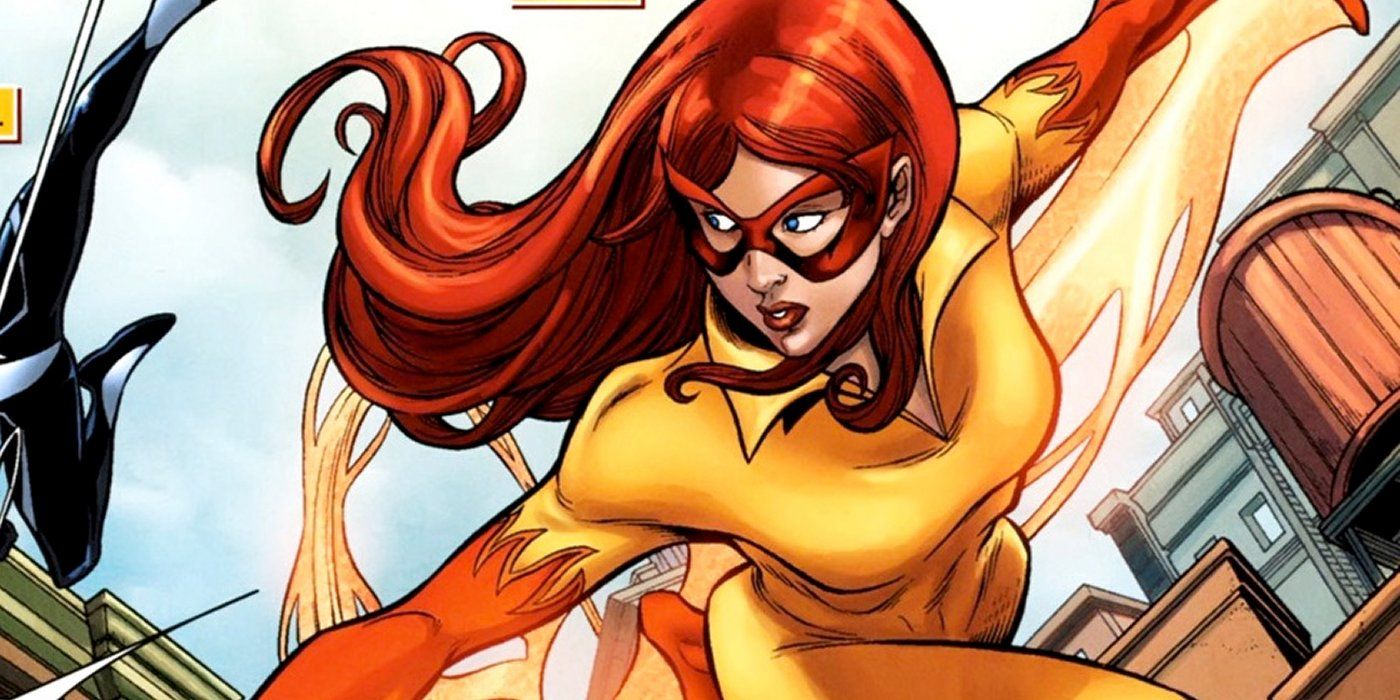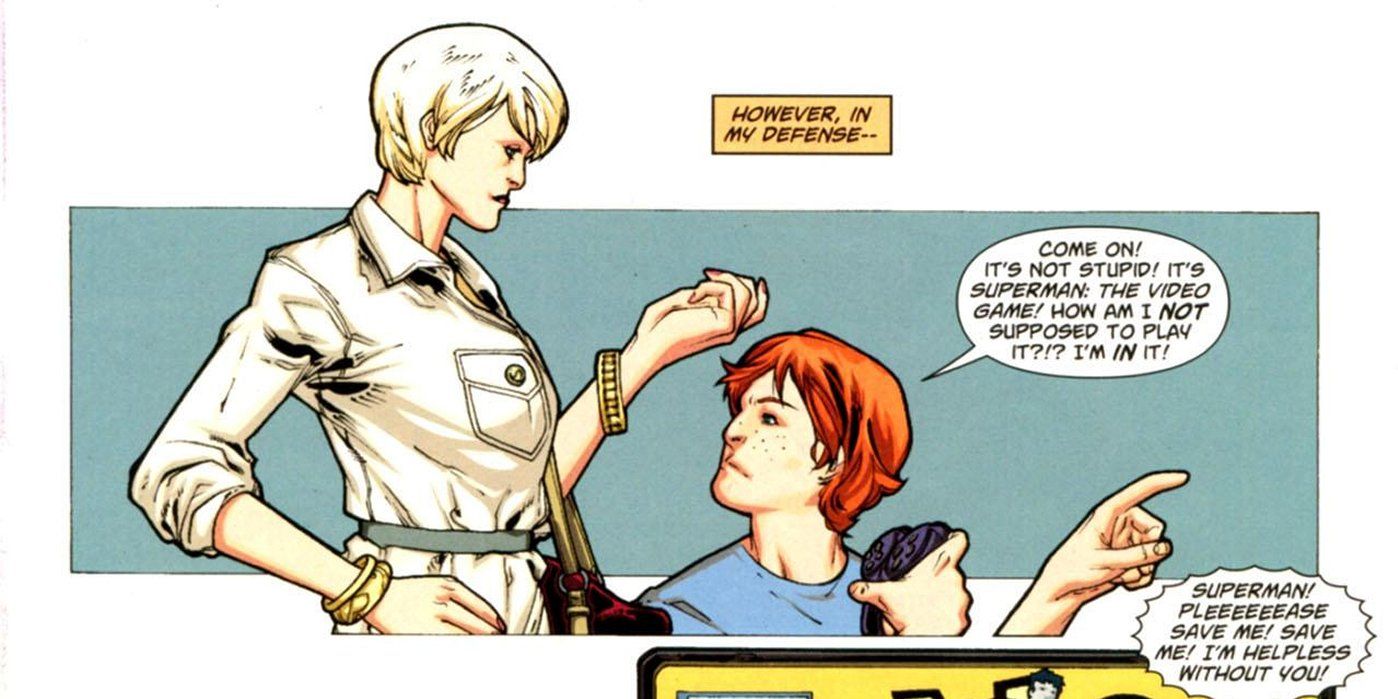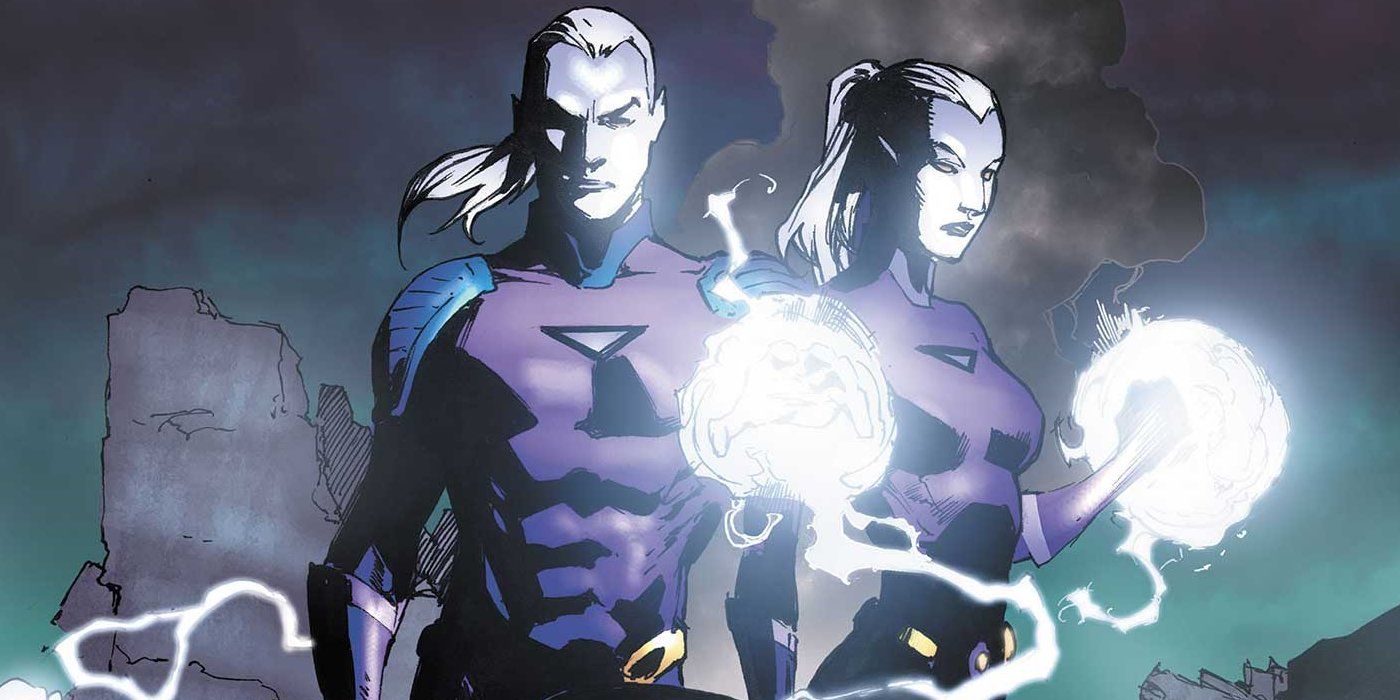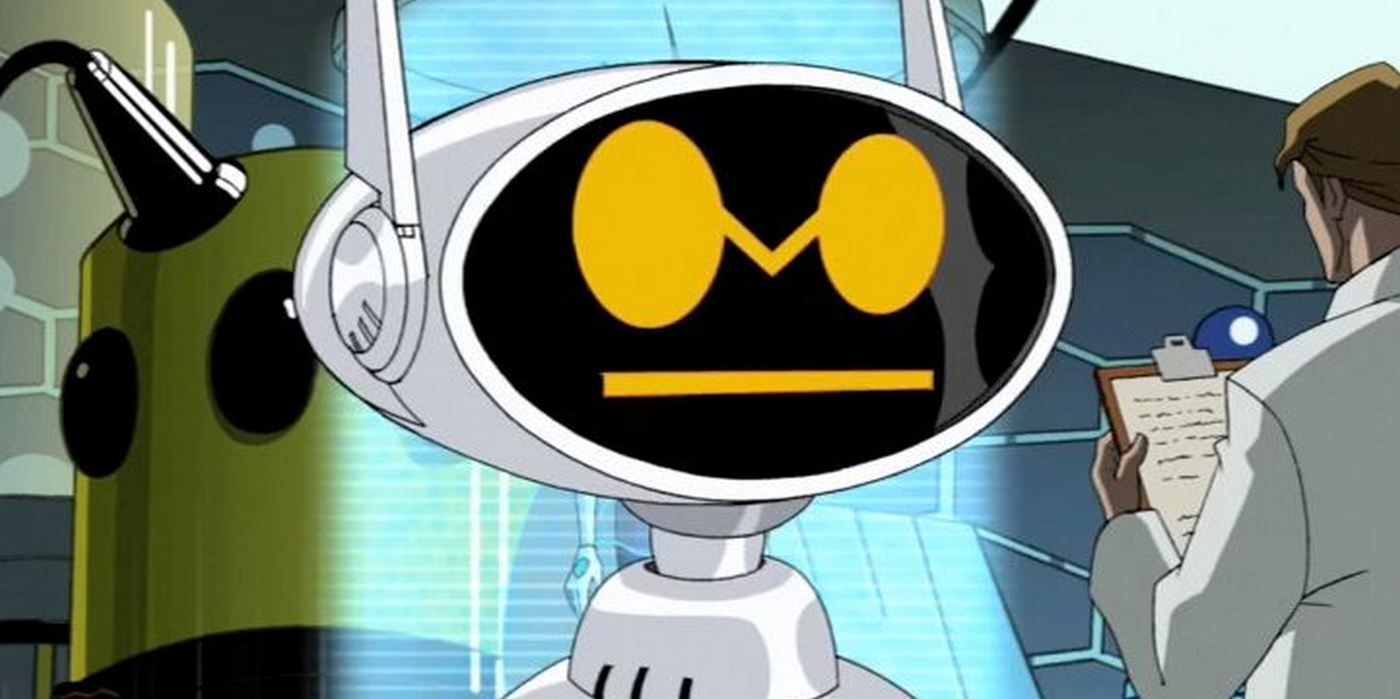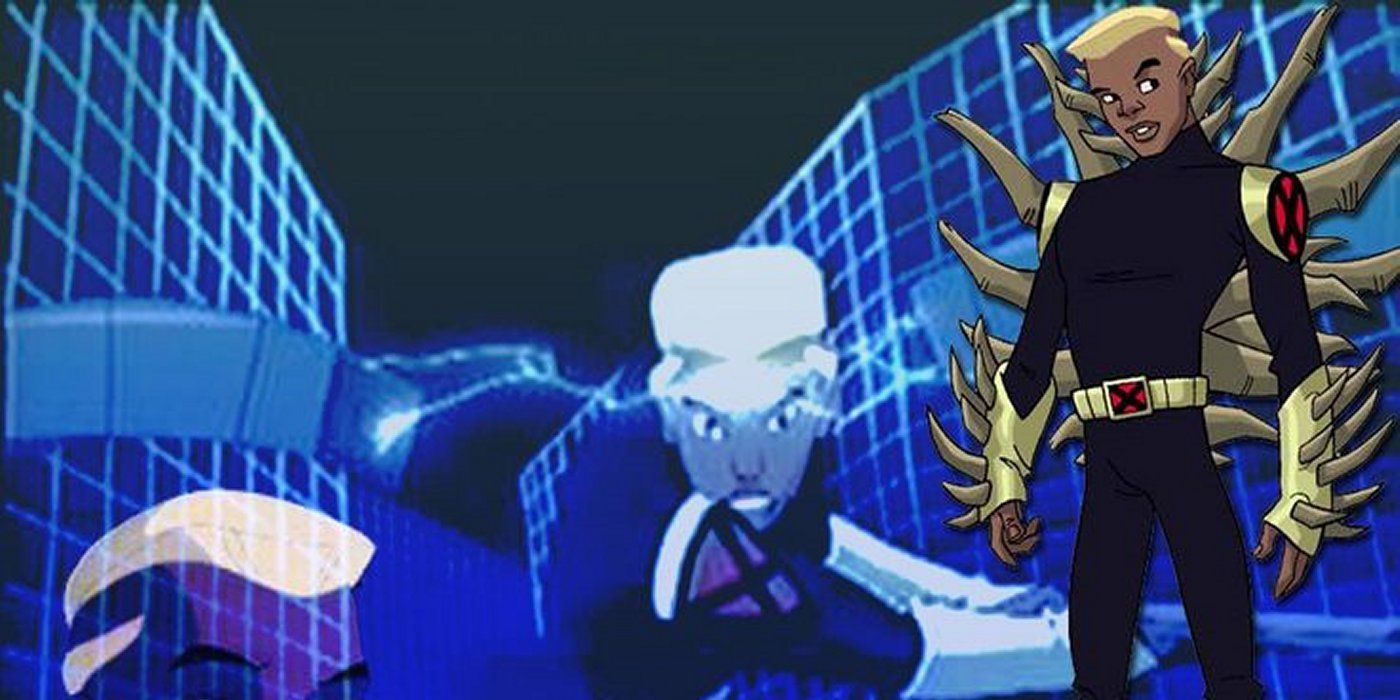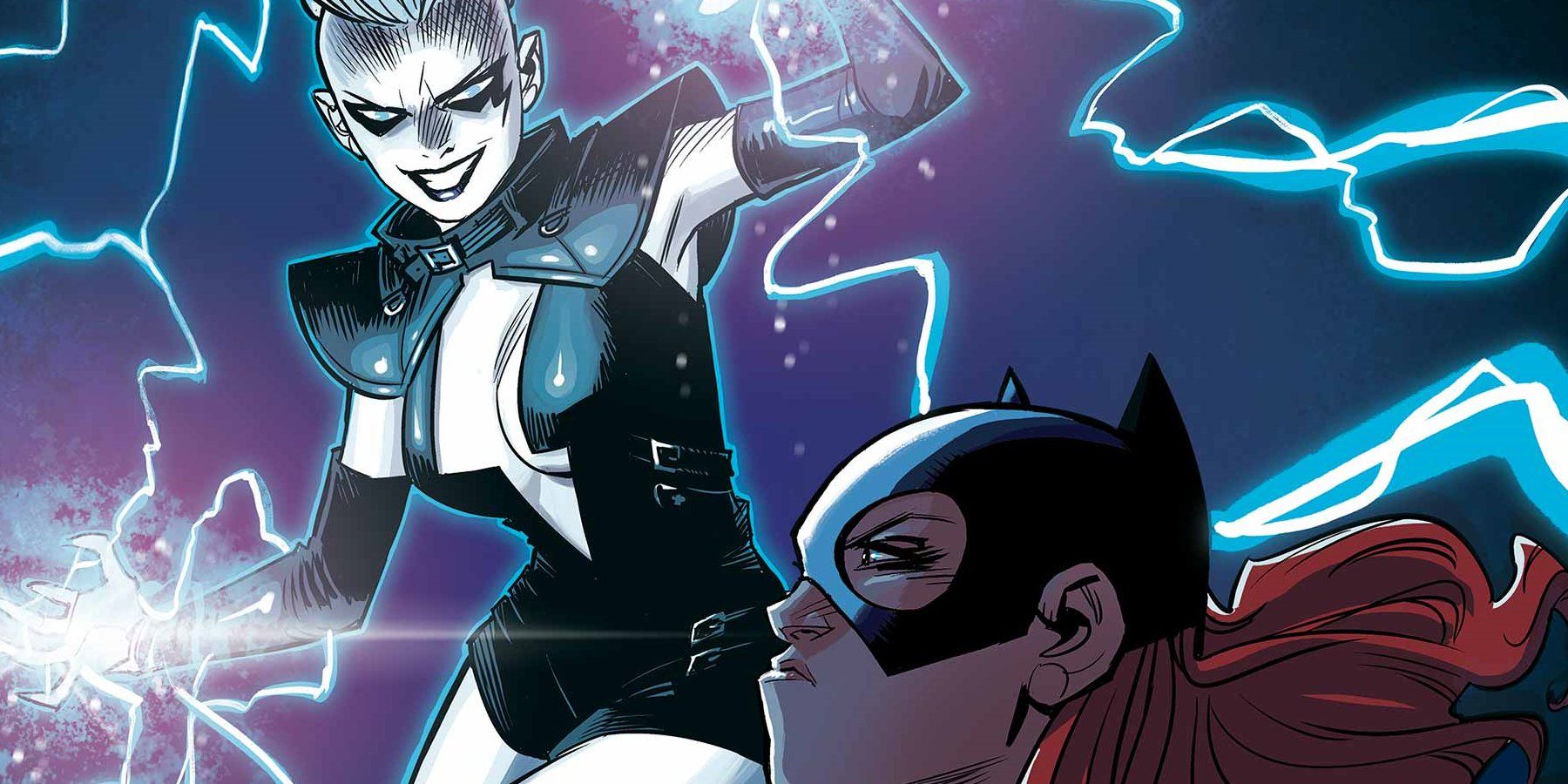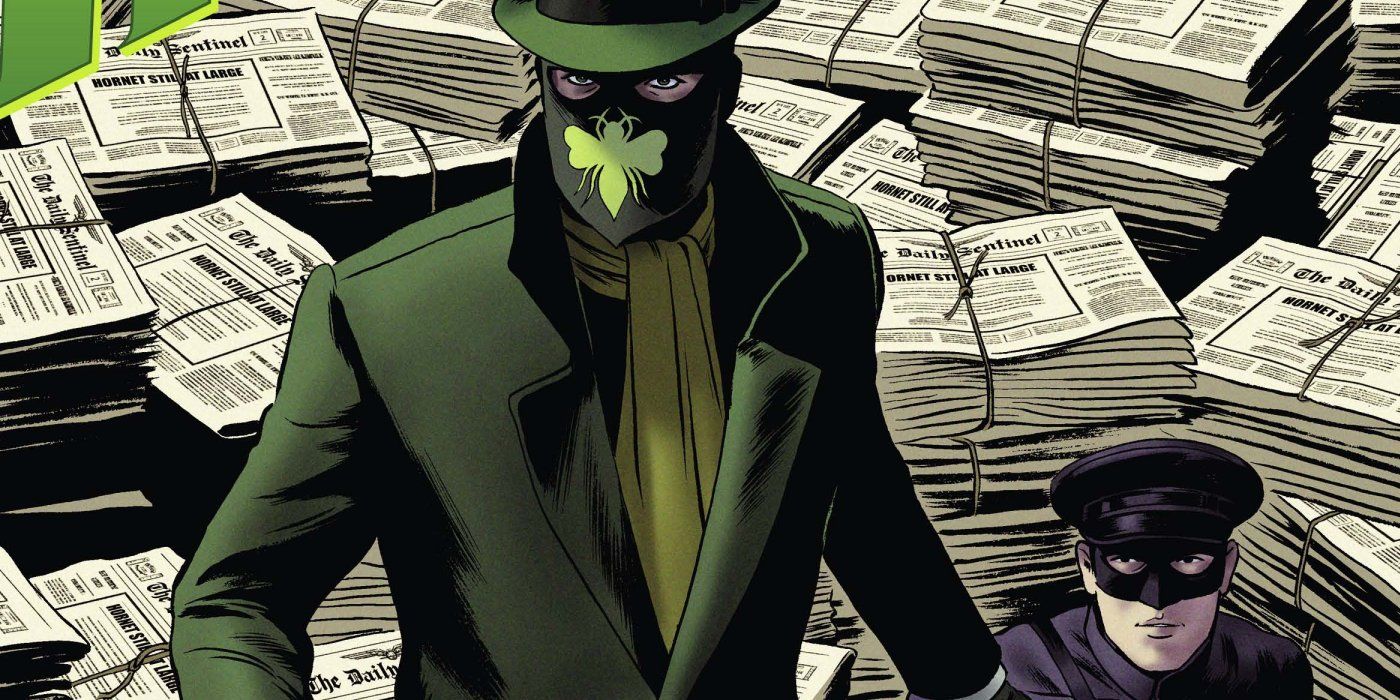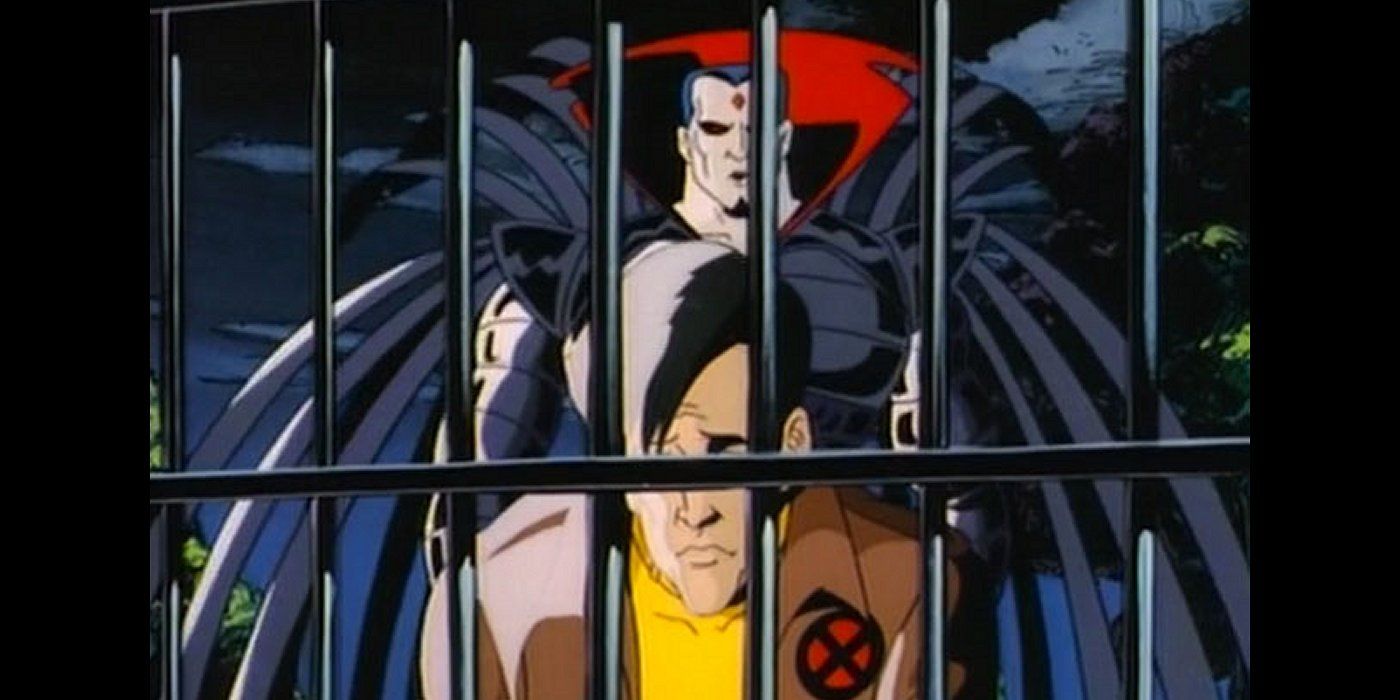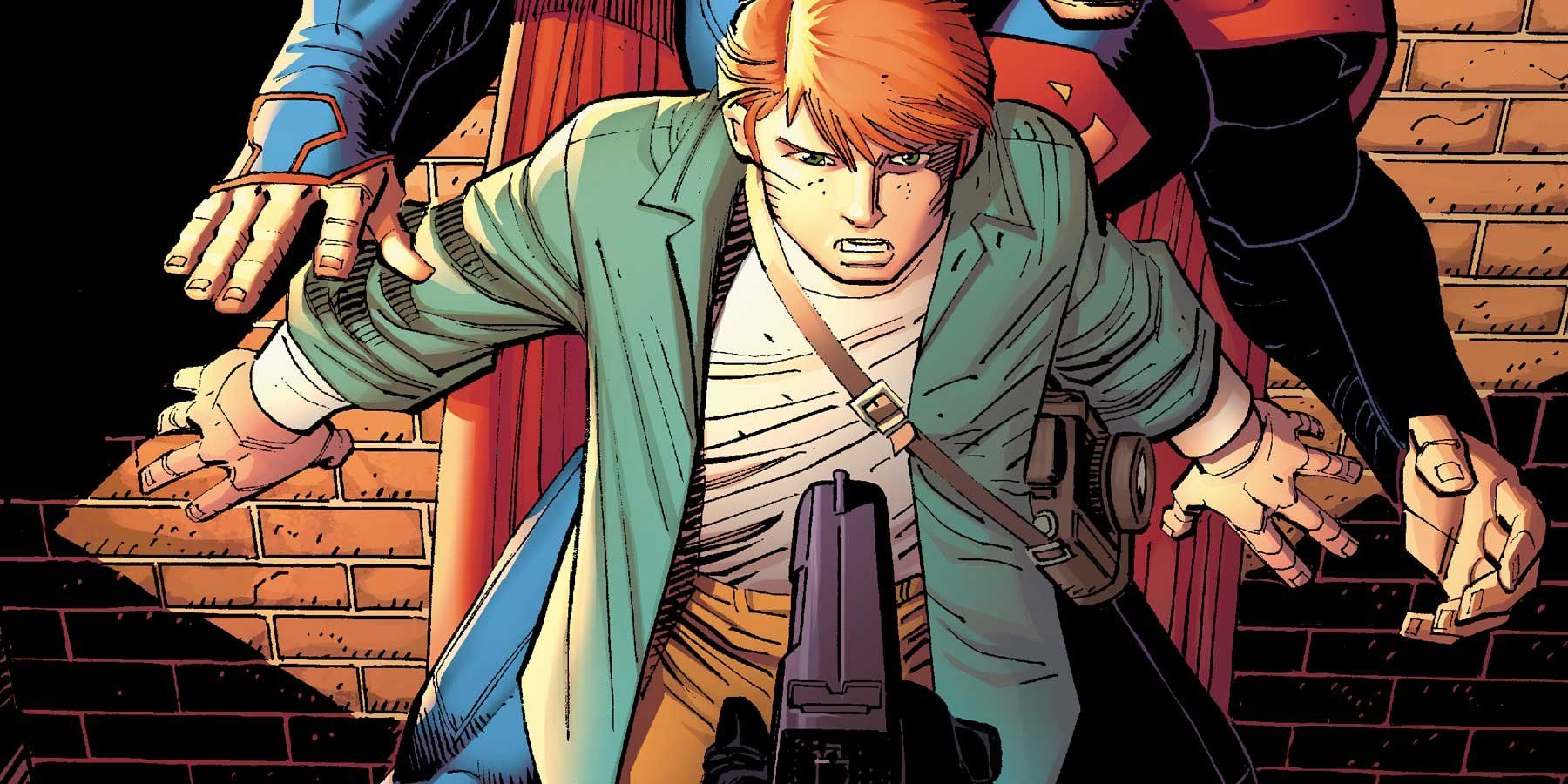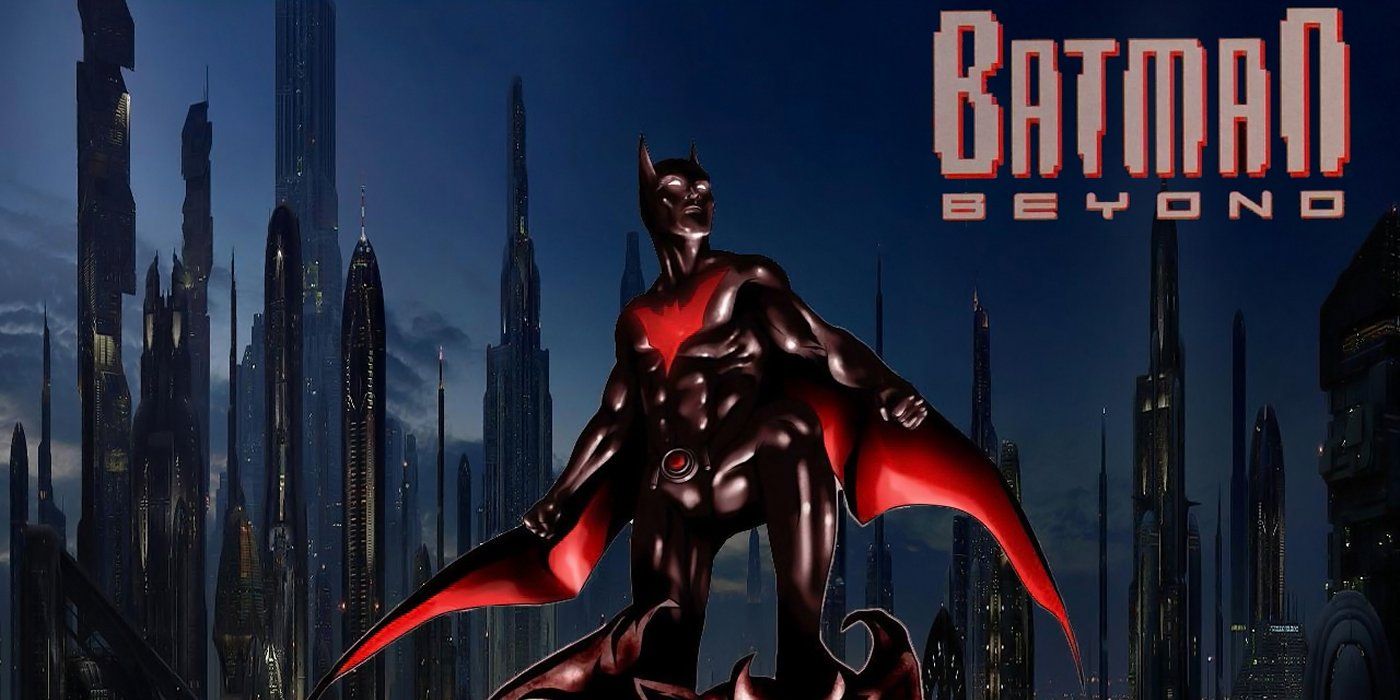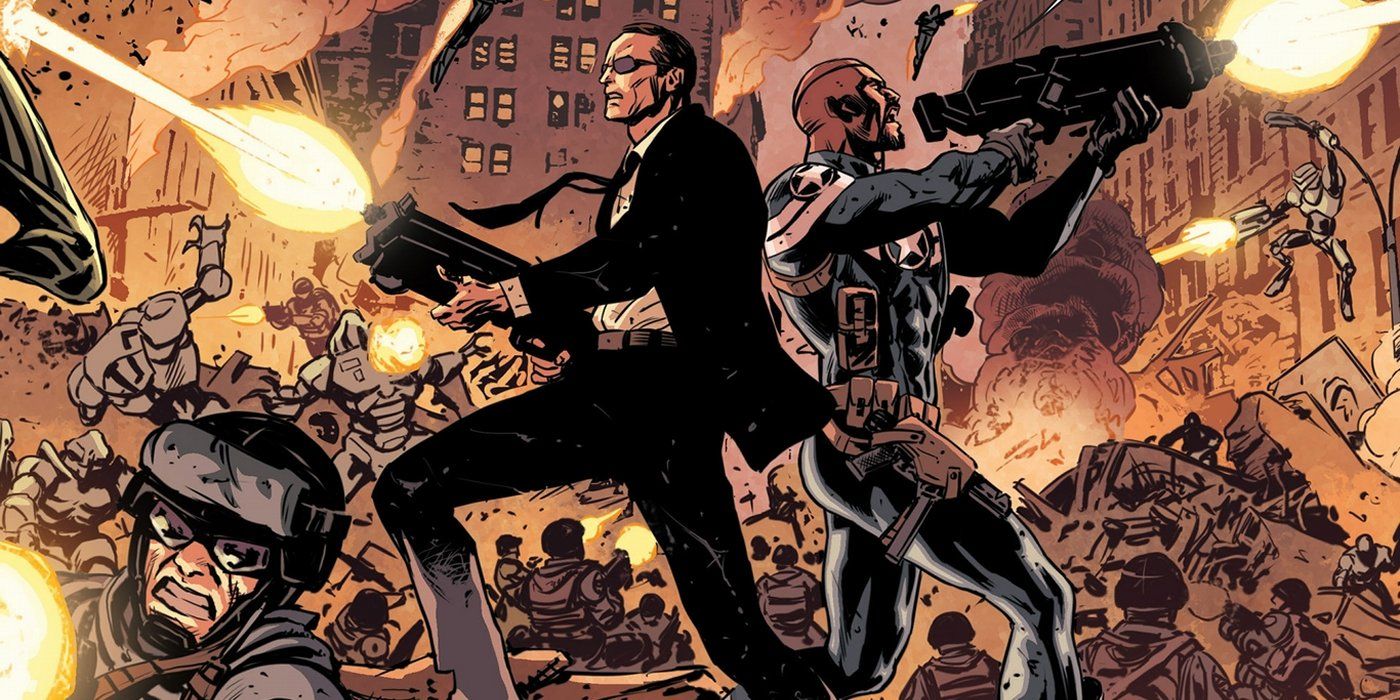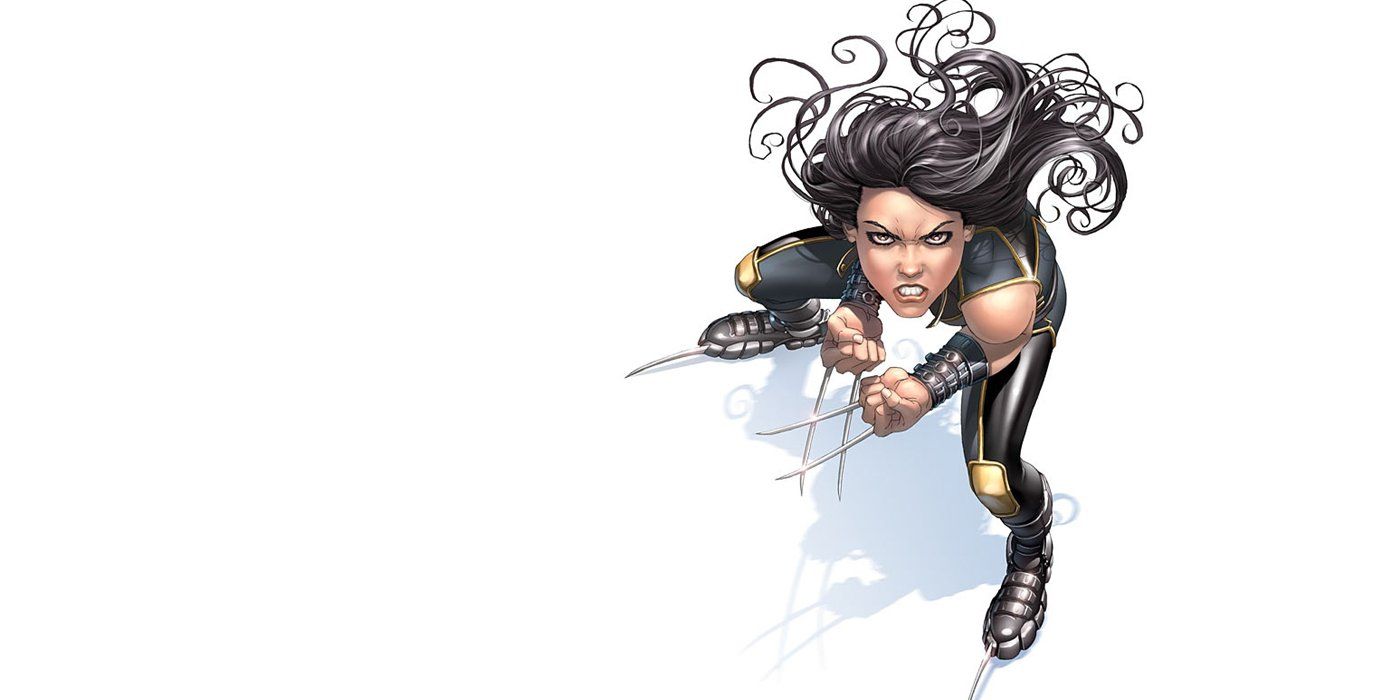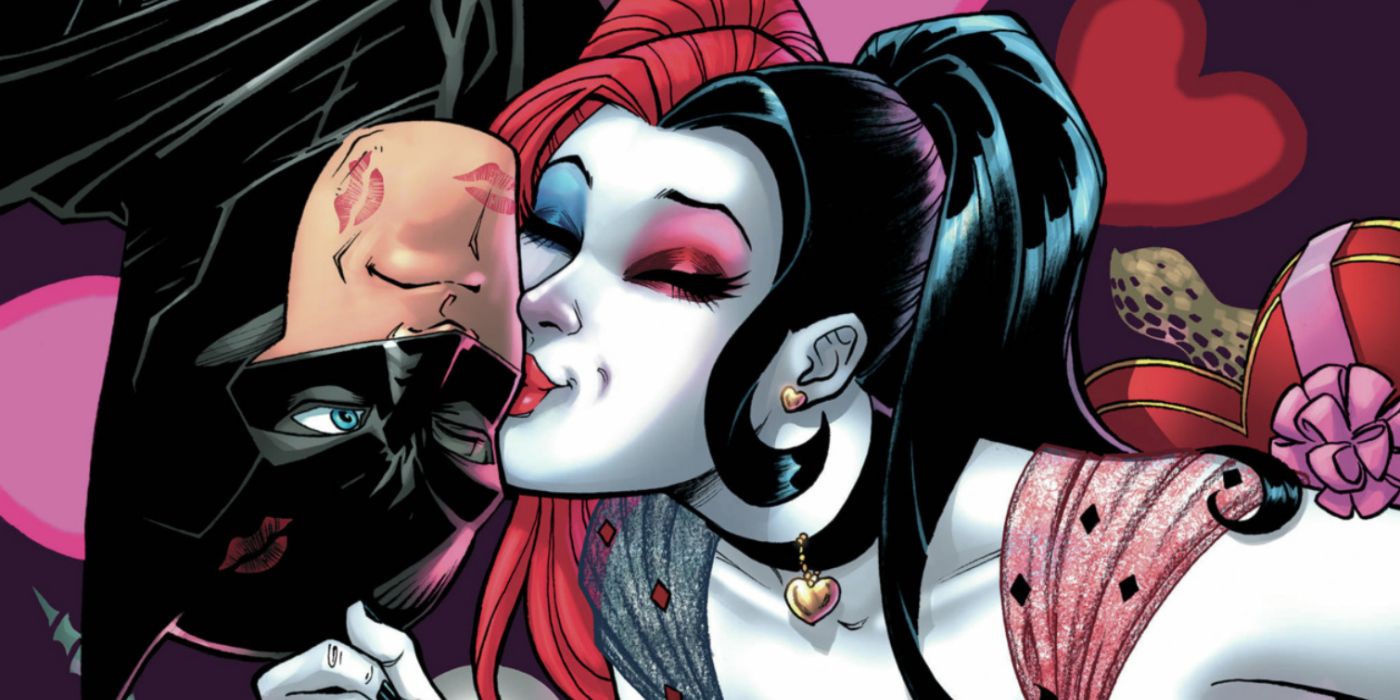The relationship between comics and the silver screen goes way back, with radio programs, movie serials, and campy TV adaptations of superhero comics being almost as old as superheroes themselves. Every time a new superhero movie comes out, the first question on every fan's lips is whether it's going to be true to the original stories, even though comic universes themselves are swirling with several vastly different takes on every character. While fidelity to the source material is highly valued, what is most valued is whether a movie or TV adaptation captures the spirit of what made these characters jump from the page in the first place.
But what about when the opposite happens, and a movie or TV series introduces a totally new character? What about when this new creation ends up being so popular that they actually get reverse-adapted into the comics themselves? This has happened more often than you might think, with a handful of the most popular characters in comic books today owing their roots to film or animated adaptations.
The wheel of adaptation is always spinning, and some comic book characters just start their fictitious lives on a different spoke of it. Here are 15 comic book characters who debuted outside of comics.
15. John Diggle
The CW's hit series Arrow has done a lot to bring Green Arrow from a B-list hero to the mainstream, and its darker, more realistic take on Oliver Queen -- while owing much of its inspiration to Mike Grell's Longbow Hunters -- has in turn influenced recent runs on the comic book. Perhaps the show's biggest gift to the DC universe is John Diggle, a character created for the series and played by David Ramsay, whom has grown popular enough that a faithful adaptation of Diggle was introduced into DC Comics in Green Arrow (Volume 5) #24.
Originally introduced as Oliver Queen's bodyguard, assigned to protect him when the wealthy socialite resurfaces after having been missing for sveral years, Diggle is a US Special Forces solider who suspects early on that something strange is going on with Oliver. When Diggle discovers Oliver's secret identity, he initially opposes the billionaire's vigilante activities, but goes on to become his friend, confidante, partner, and eventually even a fellow vigilante, taking on the code name Spartan.
14. Bebop and Rocksteady
The 1980s Teenage Mutant Ninja Turtles cartoon, with all of its goofiness and sincerity, did a lot to influence future takes on the half-shelled heroes, including this summer's Teenage Mutant Ninja Turtles: Out of the Shadows. But perhaps nowhere is that cartoon's impact more notable than for its introduction of Bebop and Rocksteady, the dumb-as-bricks warthog and rhinoceros duo who have become almost as synonymous with the Turtles as Shredder himself.
Named after a Jamaican style of pre-reggae music and a form of jazz, the two mutant goons were designed by Turtles co-creator Peter Laird when Playmates, who was putting together a line of action figures for the property, wanted more characters. The characters were given backstories, codenames, and personalities by the cartoon's writer, David Wise, who envisioned them as two members of Shredder's street gang who willingly undergo a procedure to transform them into mutant goons. What makes most fans love the characters is their general stupidity and oafishness, and they're only really being a challenge to the far more intelligent Turtles due to their sheer power levels. The creators of the Turtles aren't so fond of them, though.
13. Firestar
Spider-Man and His Amazing Friends was another beloved cartoon in the 1980s with a fairly strange twist, as it depicts Peter Parker becoming roommates with former X-Men Iceman and Firestar, the three of whom join forces to become a superhero crime-fighting trio. Complete with such oddball touches as a villain spawned from an arcade machine, a cameoing Wolverine with an Australian accent, and Aunt May having a small male dog named "Ms. Lion," this series is definitely a product of its time.
However, the character of Firestar actually first appeared in this cartoon, and had never existed in the comics before that. While the creators always envisioned Spider-Man having ice and fire-styled teammates, they originally intended to have the Human Torch in Firestar's place. When the famous Fantastic Four member became unavailable due to contractual issues — we'll hear more about the Human Torch's unavailability later on this list, don't worry — the writers replaced him with a brand new heroine named Angelica Jones, who ended up being the breakout star of the series.
Firestar was later introduced to the comics in Uncanny X-Men #193, and went on to establish herself as a member of the New Warriors and the Avengers. She's now the Psychics teacher for the Jean Grey School of Higher Learning.
12. Chloe Sullivan
In its years on the air, Smallville introduced a lot of Superman characters, many of them being portrayed in live-action for the first time... despite the fact that the show's lead character never actually became Superman until the very last episode. But one brand new character that the show introduced that became an immediate fan favorite was Clark's quick-witted, impulsive friend Chloe Sullivan, who harbors an unrequited crush on the boy of steel for most of the series.
Though originally brought in to fill the smart-and-assertive-reporter sized hole left in the supporting cast by the absence of Lois Lane, Chloe continued appearing on the show after Lois was introduced. She eventually spun off into her own web-based series, Smallville: The Chloe Chronicles.
In the comics, there were discussions about bringing Chloe into the fold as far back as 2007, but writers struggled with figuring out how to differentiate her from Lois while also keeping the spirit of the TV character. Eventually, Chloe finally appeared in the comics in 2010, when writer Nick Spencer wrote her into Action Comics.
11. Wonder Twins
"Wonder Twin powers, activate!"
There are few characters that have received the level of mockery given to the Wonder Twins, and it's easy to see why. An alien brother and sister from the planet Exxor who must touch hands in order to use their shapeshifting powers, Jayna and Zan (along with their pet space monkey, Gleek) were one of the more ridiculous parts of The Super Friends, a Justice League series that was already ridiculous enough as is, without adding in a cosmic Marie and Donny Osmund with Vulcan eyebrows, hair, and ears.
However, the Wonder Twins were brought into the comics in #9 of Extreme Justice, a rebellious '90s Justice League spinoff that ran for two years, where they were given a revamped backstory as runaway extraterrestrial slaves who allied themselves with the team in order to prevent their entire race from being enslaved by a fearsome alien warlord. In subsequence appearances, the duo has been portrayed far more seriously (see above) than their goofy beginnings. The Wonder Twins have made occasional showings in the comics since then, and have also been adapted into Smallville and the animated Justice League series.
10. H.E.R.B.I.E.
Okay, maybe there's at least one character who gets mocked more often that the Wonder Twins.
Remember that whole thing about how Spider-Man and His Amazing Friends couldn't use the Human Torch, due to rights issues? Well, basically, the rights to the Human Torch character had at the time had been optioned out by Universal Studios for a potential live-action solo TV movie, ala Bill Bixby's The Incredible Hulk. This Torch film never came to be, but its development nonetheless left its mark on the world; not only did it result in the creation of Firestar, but when the Fantastic Four were adapted into a cartoon in 1978, they couldn't use Johnny Storm.
So instead, they replaced him with a cute little robot designed by Jack Kirby.
H.E.R.B.I.E., which stands for Humanoid Experimental Robot B-Type Integrated Electronics, was voiced by Frank Welker and served as a core member of the team, even taking on many of Johnny's personality traits, as well as his rivalry with the Thing. Herbie was brought into the comics a year later, though obviously not in such an important role, and he has shown up many times since, as well as making appearances in other cartoons and even cameoing in the extended cut of the 2005 Fantastic Four. One cool meta-detail: since the Fantastic Four are such a popular team, with their identities all being public knowledge, the 1978 cartoon actually exists within the Marvel Universe, with the in-universe explanation for H.E.R.B.I.E. replacing the Torch being that Johnny missed the meeting where they all signed the contracts for the cartoon.
9. Spyke
When X-Men Evolution premiered in 2000 following the release of the first X-Men movie, its roster included a couple of surprise characters, including one who had never appeared before. Evan Daniels, codenamed Spyke, is a skateboarding teenage mutant who possesses the ability to sprout bony growths from his body, which can then be used as projectiles, shields, and more. In the initial seasons, he is able to retract his "spykes," but as his powers develop, he grows a hard armored shield of plates around much of his body that cannot be retracted. The subsequent ostracization he experiences as a result of his physical differences leads to him leaving the surface world behind and joining the Morlocks in the sewers.
Though Spyke has yet to be fully introduced into the comics, a couple of attempts have been made. Recent comics have introduced a character named David Munroe Jr., who, like Evan Daniels in the series, is Storm's nephew and the son of her sister, Vivian. This younger character has yet to manifest his mutant powers.
Spyke also appeared as a minor villain in a scene of X-Men: The Last Stand, and made a second cameo in the Vietnam sequence of Days of Future Past.
8. Livewire
The DC Animated Universe, which started in Batman: The Animated Series, has extended an enormous influence over all of the DC Universes, from the comics to film, remolding old characters in new ways and introducing many new ones into the fray. One of these is the Superman villain Livewire, aka Leslie Willis, a youthful radio shock jock known for publicly putting down Superman on her popular radio program. After an electrical accident occurs to her during a lightning storm, Leslie gains the ability to manipulate electrical currents.
Livewire was brought into the comics in 2006, with her background, motivation, and powers largely unchanged by the transfer, other than the comics version having possessed some form of electrical powers since she was born. At one point, Livewire became more of an antihero than a villain, though later iterations of the character have brought her back to her antagonistic roots.
7. Green Hornet
One of the more intriguing things about the Green Hornet, as a comic character, is just how much the various media depictions of him have completely overshadowed the comic book stories. Green Hornet comics have been in print, on and off, since 1940, with the 1989 NOW Comics depiction introducing the notion of the Green Hornet as a legacy identity, wherein a different person takes up the identity with every new generation. This take was also used in Kevin Smith's Green Hornet comics.
But although the hero is most recognized for the 1966 TV series starring Van Williams and Bruce Lee, which at one point crossed over with Adam West's Batman, the character actually debuted in a radio drama back in 1936, back before Superman opened the floodgates for superheroes. The radio series ran on WXYZ and was sponsored by General Mills. It proved popular enough that Green Hornet was subsequently spun off into comics, film serials, and more.
6. Morph
When the writers for the now-classic 1990s X-Men: The Animated Series were first figuring out how to heighten the stakes on their show, they decided that the best way they could get the ball rolling was by killing one of the X-Men within the first few episodes. Not wanting to lose any of the major characters, they instead elected to create a brand new one... and thus, Morph was born, in order to die.
Portrayed as a humorous, joyful prankster, and Wolverine's close friend — or as Logan puts it, "the only one who could ever make me laugh" — the loss of Morph is a heavy blow for the team to take, particularly as the world around them grows increasingly intolerant of mutants. However, Morph's body is secretly taken away and healed by the villainous geneticist known as Nathaniel Essex, aka Mr. Sinister, and the scientist brainwashes Morph to believe that he should take vengeance on his fellow teammates for leaving him behind. Though Morph to some extent breaks free from Sinister's control, he continues to be a complicated character throughout the show's run, continually fighting an internal war against the light and dark sides within him.
Morph was brought into the comics in Exiles #1, where he is depicted as having chalk-white skin and a nose-less face, features which set him apart from his peers at an early age and lead to him developing his jokey, fun-loving demeanor as a way to keep himself from getting depressed. Though the comic book Morph also has a history in the X-Men, he has been spared the brainwashing from Sinister that his animated counterpart had to face.
5. Jimmy Olsen
Everybody knows Superman's pal Jimmy Olsen, a character almost as synonymous with the last son of Krypton as Robin is with Batman. Yet surprisingly enough, the Daily Planet's endearing boy photographer actually got his start not in the comics, but on the radio show The Adventures of Superman in 1940.
The reason that Jimmy was introduced was simple plot mechanics. In order to tell Superman tales in an entirely auditory storytelling format, the writers required a character whom Superman could talk back and forth with. This led to the creation of Jimmy, who was then adapted into the comics for a brief time. Though Jimmy did appear in the Superman film serials, he vanished into obscurity shortly afterward, but was revived in the comics after the character was included in the George Reeves live action 1950s series.
If there's any character we can thank media adaptations for not only creating, but keeping around in the present day, it's Superman's best friend.
4. Terry McGinnis
What happens when Bruce Wayne gets too old to be Batman?
It's a question that has been asked many times, but no attempt to answer it has been as successful as when the creators of Batman: The Animated Series released Batman Beyond, a high-tech, cyberpunk evolution of the Batman legend that shows a Neo-Gotham still desperately in need of a savior.
Stepping into the cowl is an angry teenager named Terry McGinnis, who, in pursuit of vengeance for his father's murder, steals the last version of the Batsuit from an elderly Bruce Wayne. Though Terry returns the suit, he and Bruce then form a partnership, wherein Terry ventures out into the night as the new Batman, while Bruce monitors him from the Batcave, staying as involved as possible. Later, it is revealed that Bruce and Terry share more links than either of them realize, but that's another story altogether.
After an enormous success that led to future cameo appearances, a spinoff, and a cancelled live-action film, the Batman of tomorrow was finally brought into the mainstream DC Universe, where he has since become the focus of a number of ongoing comic book runs. It might be a little while before Terry makes the jump to the big screen, but we're betting it'll happen at some point.
3. Agent Phil Coulson
In the first movie that will launch off a sprawling extended cinematic universe, how do you introduce millions of viewers to a fictitious intelligence agency that will soon become a huge piece of the Marvel puzzle? The answer, of course, is to have the first agent be a likeable, relatable character whom the audience remembers, and that ended up being Phil Coulson.
Portrayed by Clark Gregg as an everyman with a quick smile and an earnest hero worship for Captain America, Agent Coulson quickly exploded in popularity, to the point where his seeming death in The Avengers not only gets the audience in tears, but is also the stirring event that finally unites all of the disparate personalities of the Earth's Mightiest Heroes together to face off against Loki and his army.
It's no surprise that it didn't take too long for Coulson to become incorporated into the comic books, where he's been kicking around ever since. Coulson is alive, and we don't see him getting killed off anytime soon.
2. X-23
X-Men: Evolution may have introduced Spyke to the world, but its most significant contribution to the mutant landscape was its creation of X-23, a young, female clone of Wolverine who has had to endure much of the same suffering, her entire creation being another attempt to create the perfect human killing machine. Possessing all of Wolverine's powers and the same temperament, X-23 is raised in a cold, sterile environment for her entire life. As an adolescent, X-23 is triggered to murder her "mother," Dr. Sarah Kinney, who in her dying moments tells the young clone that her real name is "Laura," and shows her pictures of Xavier's School for Gifted Youngsters.
Laura has since become a major character in the X-Men world, breaking free from her past life as an assassin to instead become a student at the X-Mansion. After Logan's death, she takes on the identity of Wolverine in honor of the man who is the closest thing she ever had to a father. There's a good chance that Laura will be making her cinematic debut soon, in the upcoming Wolverine 3.
1. Harley Quinn
At this point, it's hard to believe there was ever a Joker before Harley Quinn existed. The former psychiatrist turned career criminal is one of the most fascinating, bubbly, and tragic characters in DC Comics, a character whose abusive on-again, off-again relationship with the Joker has served to even further flesh out the most iconic supervillain in comics, and also led to her becoming an iconic figure in her own right. This year, Harley will finally explode into the public consciousness when her cinematic debut, Suicide Squad, hits theaters.
But even though Harley is quickly turning into one of the biggest characters in comic books, she actually got he start in Batman: The Animated Series, a cartoon that is still held up by many as the best incarnation of the Dark Knight's world to date. Harley was soon adapted into the comics, almost completely unchanged, where she has since become a major Batman rogue and occasional antihero, though her psychotic tendencies tend to put her on the wrong side of the law.
---
Do you know of any more comic characters that got their start elsewhere? Sound off in the comments.

